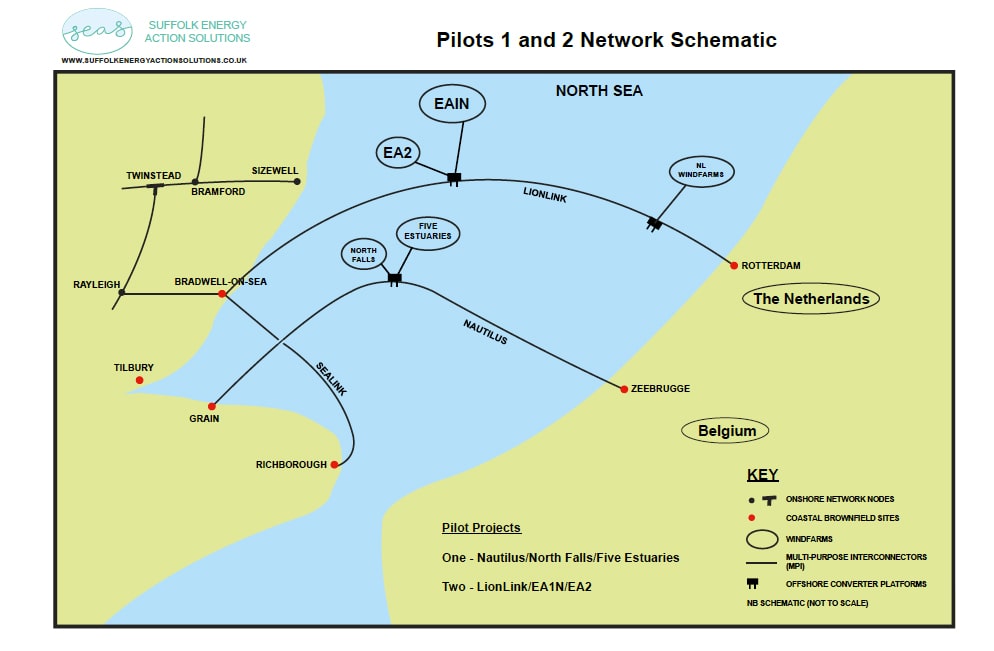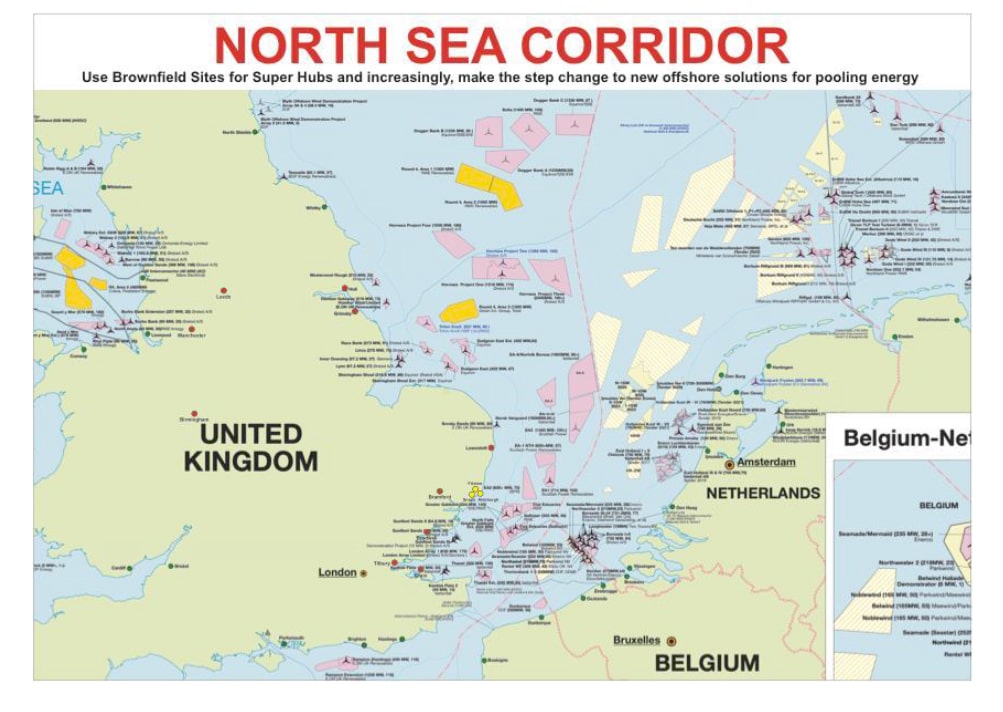PILOT TESTS for an OFFSHORE GRID is THE WAY FORWARD
The cheaper, faster solution for wind energy transmission is an offshore transmission network, in short an offshore grid. This uses the North Sea Corridor as the main delivery route for wind energy, going from wind farms to an offshore platform where it is pooled and taken for the last stage of the journey using subsea cables to onshore hub sites such as Bradwell-on-Sea, West Grain, or Tilbury. A series of these circuits can be built over time with two/three wind farms per offshore platform and an interconnector which can import or export that energy from Britain to another North Sea country such as Belgium or Holland. This offshore grid is ultimately composed of a series of flexible and expandable offshore circuits.
Switching to an offshore grid for the transmission network design off East Anglia coast will help achieve Net Zero faster and with greater certainty, whilst supporting economic growth and regeneration. With the Framework in mind now, we can start buildingfor the future knowing that we are setting in place the smartest solutions in terms of environmental, economic and social benefits. Nothing is perfect, but this is significantly better than the current needlessly destructive plans using places such as Friston, a deeply rural medieval village, as a major hub site. Brownfield sites such as Bradwell and West Grain are better suited to the long-term needs and can be the base for a growing raft of converter stations, substations connecting to upgraded pylons, and hydrogen storage. Above all, they are closer to demand and in need of regeneration.
An offshore grid will mean significantly reduced onshore impact, with fewer onshore substations and cable trenches and correspondingly, reduced negative impact on environment and communities. An offshore grid will demonstrate Government action towards legally binding commitments regarding Net Zero and its 30-by-30 biodiversity pledge. An offshore grid is not a fantasy. It is realistic and achievable. Belgium’s National Grid equivalent has been successfully been implementing their offshore grid for the last four years. Holland, Germany and Denmark are fast becoming offshore grid converts ploughing billions of Euros into their offshore circuits, where a growing network will join up through offshore platforms. Belgium took less than 4 years to build its MOG platform (see film HERE).
Nation Grid ESO’s ‘East Anglia Study’ has now been officially launched in December 2023. Consultations are taking place and SEAS will be promoting its ideas relating to:
- Transmission Network Design Principles (see HERE)
- Pilot One and Pilot Two (see below)
- The Case for Bradwell as a major Hub
The current scope for the EA Study is far too narrow, and lip service is paid to the more strategic offshore transmission network possibilities.This EA Study appears flawed from the outset and biased in favour of outdated onshore solutions, wrecking more countryside and communities in their wake.
Pilot Tests (see Pilots 1 and 2 schematic below):
Pilot 1: Nautilus Interconnector
Five Estuaries and North Falls windfarms can combinewith the Nautilus Interconnector and takepower to West Grain.
Pilot 2: LionLink interconnector
ScottishPower’s windfarms East Anglia One North (EA1N) and East Anglia Two (EA2) and LionLink can combine energy offshore and take power to the brownfield site of Bradwell-on-Sea.
Based on previous National Grid ESO’s analysis an integrated offshore grid for East Anglia could offer cost savings of more than £2bn.
In the short term, Government needs to put in place a financing investment scheme to build the platform and establish incentives for developers to cooperate rather than working separately. Belgium’s Elia MOG could be a great role model for Britain on how to do this.


View a PDF version of this page HERE
Campaign With Us
We are asking you to write, to the Secretary of State for the Department of Energy Security and Net Zero (DESNZ), see full details HERE
